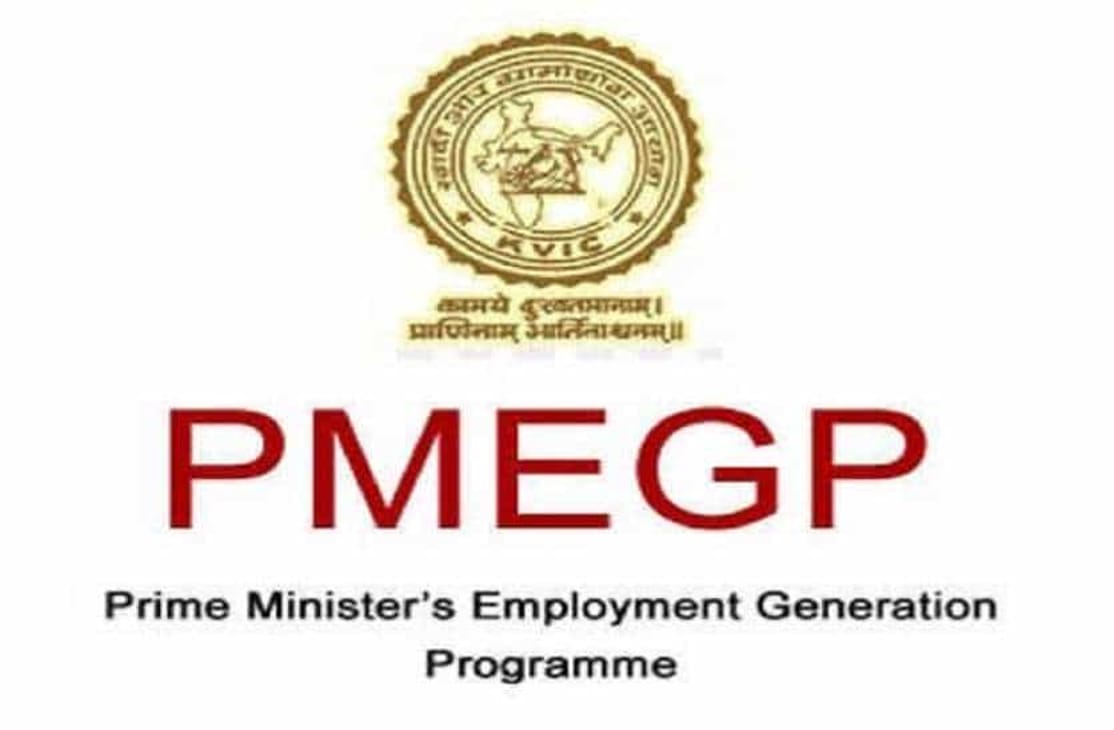CA Deepak Bharti | Jun 25, 2019 |

Prime Minister Employment Generation Programme (PMEGP)
Brief Introduction :
Government of India has approved the introduction of a new credit linked subsidy programme called Prime Minister’s Employment Generation Programme (PMEGP) by merging the two schemes that were in operation till 31.03.2008, namely Prime Minister’s Rojgar Yojana (PMRY) and Rural Employment Generation Programme (REGP) for generation of employment opportunities through establishment of micro enterprises in rural as well as urban areas.
PMEGP is a central sector scheme administered by the Ministry of Micro, Small and Medium Enterprises (MoMSME). At the national level, the Scheme is being implemented by Khadi and Village Industries Commission (KVIC), a statutory organization under the administrative control of the Ministry of MSME as the single nodal agency.
At the State level, the Scheme will be implemented through State KVIC Directorates, State Khadi and Village Industries Boards (KVIBs) and District Industries Centres (DICs) and banks.
The Government subsidy under the Scheme will be routed by KVIC through the identified Banks for eventual distribution to the beneficiaries / entrepreneurs in their Bank accounts.
The Implementing Agencies, namely KVIC, KVIBs and DICs will associate reputed Non Government Organization (NGOs)/ reputed autonomous institutions/ Self Help Groups (SHGs) / National Small Industries Corporation (NSIC) / Udyami Mitras empanelled under Rajiv Gandhi Udyami Mitra Yojana (RGUMY), Panchayati Raj institutions and other relevant bodies in the implementation of the Scheme, especially in the area of identification of beneficiaries, of area specific viable projects, and providing training in entrepreneurship development.
The scheme is implemented by Khadi and Village Industries Commission (KVIC) functioning as the nodal agency at the national level. At the state level, the scheme is implemented through State KVIC Directorates, State Khadi and Village Industries Boards (KVIBs), District Industries Centres (DICs) and banks. In such cases KVIC routes government subsidy through designated banks for eventual disbursal to the beneficiaries / entrepreneurs directly into their bank accounts.
Objectives:
Salient features of Scheme:
Nature of Assistance :
The maximum cost of the project/unit admissible in manufacturing sector is 25 lakhs and in the business/service sector, it is 10 lakhs.
Categories of Beneficiarys Rate of subsidy under PMEGP (of project cost)
Area (location of project/unit) General category 15%(Urban), 25%(Rural), Special 25%(Urban), 35%(Rural) (including SC/ ST/ OBC/ Minorities/Women, Ex-servicemen, Physically handicapped, NER, Hill and Border areas, etc.)
The balance amount of the total project cost will be provided by the banks in the form of term loan and working capital.
Benefits of Scheme:
| Categories of beneficiaries under PMEGP | Beneficiarys own contribution (of project cost) | Rate of Subsidy from KVIC | Bank Finance | |
| Area (location of project /unit) | Urban | Rural | ||
| General Category | 10% | 15% | 25% | 90% |
| Special (including SC/ ST/ OBC/ Minorities/ Women, Physically handicapped, Ex-Servicemen, NER, Hill and Border areas etc. | 5% | 25% | 35% | 95% |
Who Can Apply
Existing Units (under PMRY, REGP or any other scheme of Government of India or State Government) and the units that have already availed Government Subsidy under any other scheme of Government of India or State Government are NOT eligible.
Selection of Beneficiaries:
The beneficiaries will be identified & selected at the district level by a Task Force consisting of representatives from KVIC/State KVIB/ State DICs and Banks and headed by the District Magistrate / Deputy Commissioner / Collector concerned.
Negative List of Activities:
How to Apply
The State/Divisional Directors of KVIC in consultation with KVIB and Director of Industries of respective states (for DICs) will give advertisements locally through print & electronic media inviting applications along with project proposals from prospective beneficiaries desirous of establishing the enterprise/ starting of service units under PMEGP.
Related Resources
| S No. | Description | Link |
| 1 | Guidelines on PMEGP | http://vikaspedia.in/agriculture/policies-and-schemes/pmegp-guidelines |
| 2 | Whom to contact | https://www.kviconline.gov.in/pmegpeportal/dynamicdistrict/officeSearchForm.jsp |
| 3 | FAQs for PMEGP | https://www.kviconline.gov.in/pmegpeportal/jsp/SchemeFaqApplicant.html |
| 4 | Application form | http://vikaspedia.in/agriculture/policies-and-schemes/application-form-of-pmegp |
| 5 | Online Application Submission | https://www.kviconline.gov.in/pmegpeportal/pmegphome/index.jsp |
| 6 | PMEGP sample Project Profiles | https://www.kviconline.gov.in/pmegp/pmegpweb/docs/jsp/newprojectReports.jsp |
**************************************************************
Disclaimer
The contents of this document are solely for informational purpose. It does not constitute professional Advice or recommendation of the firm. Neither the authors nor the firm and its affiliates accepts any liabilities for any loss or damage of any kind arising out of any information in this document nor for any actions taken in reliance thereon. Readers are advised to consult the professional for understanding applicability of this newsletter/presentation in the respective scenarios. While due care has been taken in preparing this document, the existence of mistakes and omissions herein is not ruled out. No part of this document should be distributed or copied (except for personal, noncommercial use) without our written permission.
About Author
Author of this article is CA Deepak Bharti who is Practicing Chartered Accountant by profession. Currently he is working as Senior Advisor in Income Tax, GST, Corporate Compliance and Legal Matters with many reputed organizations. He can be reached at [email protected]. Suggestions/comments are most welcome.
In case of any Doubt regarding Membership you can mail us at [email protected]
Join Studycafe's WhatsApp Group or Telegram Channel for Latest Updates on Government Job, Sarkari Naukri, Private Jobs, Income Tax, GST, Companies Act, Judgements and CA, CS, ICWA, and MUCH MORE!"